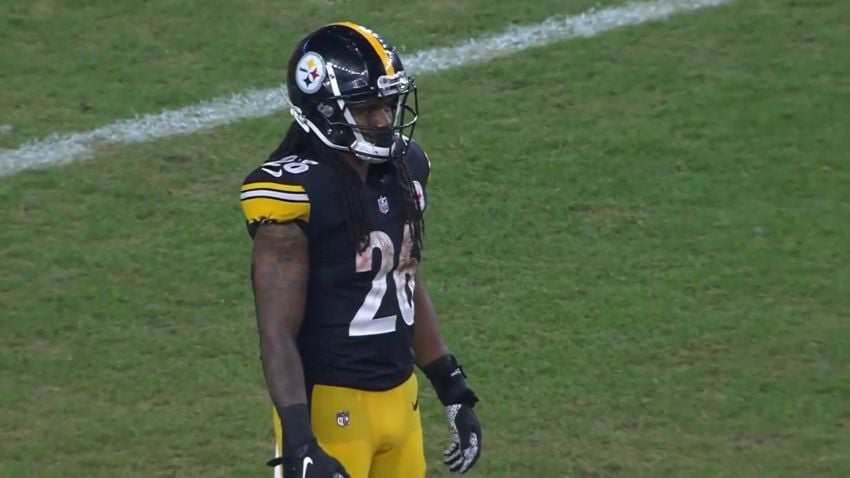The Steelers welcomed RB Anthony McFarland back to the offense against the Browns after spending the start of the season on injured reserve. After getting just 39 touches last season and with Najee Harris cornering the market on snaps and touches in the running back group there was a bit of a mystery as to how much he would get used.
The answer? Not a lot.
He was on the field for just seven offensive snaps in his first game back and received just one touch resulting in a one yard run. Last season McFarland was largely ineffective and the team seemed to lack a plan as to how to use him. Whether they ran him inside, outside or on screens the majority of plays were less than successful.
So now that he was back how would he be used and can those plays be effective? When asked about McFarland last week offensive coordinator Matt Canada mentioned that “It’ll just depend if we call the right play at the right time.”
I wanted to take a look at three plays that included McFarland from the Cleveland game and show how using similar alignments and making plays look the same led to three different plays.
Play One – 12 Personnel – Toss Left
The first play is McFarland’s (26) second snap and his only touch in the game. The Steelers have two receivers to the left and two tight ends to the right. Diontae Johnson (18) will go in jet motion getting the linebackers to all take one step to the left. The fake to Johnson holds the linebackers while the offensive line moves to the left. This play looks like it has potential and if Kevin Dotson (69) were able to block Sione Takitaki (44) McFarland would have been one on one with the safety.
Play Two – 11 Personnel – Fake Toss Left, Bootleg Right
This play came in the second quarter. They start with three players to the left, one to the right and will motion tight end Zach Gentry (81) to the right. After the motion they have two receivers to the left of the formation like the first play. Instead of tossing it to McFarland like the first play, Ben Roethlisberger (7) fakes the toss and rolls out to the right. The fake gets all four defensive lineman and all three linebackers to bite. It’s a two man route and Johnson ends up wide open on a comeback route for a 17 yard gain.
Play Three – 20 Personnel – End Around
This comes on very next play. They start with the same formation with three players to the left and one to the right. The offensive line will again release to the left to block. McFarland will again break to his left looking for the toss play. But instead of motioning a player to the right again, this time Ray-Ray McCloud will break to the right at the snap and receive the toss from Roethlisberger on the end around. The similar flow of the play gets eight defenders to bite this time getting McCloud plenty of room to the outside. A better block by James Washington and this may have been a touchdown.
Benefits for McFarland
Like I stated above McFarland mostly struggled in his rookie season. Was that based on how he was used? Was that based on the variety of things he was asked to do? Was it based on his decisions within the play? It was probably a combination of many factors that lead to the ineffectiveness.
Instead of throwing him back into the fire they came in with a small set of plays in which to use him. This allowed McFarland to concentrate on a small group of plays leading him to have to think less and just react because he knows exactly what he is supposed to do. His pass plays were check releases from the shotgun and the other plays were based off of the toss play.
Benefits for the Offense
Disguising what you want to do within the offense is paramount to success. Matt Canada used the return of McFarland to create a package of plays that used similar formations and motion to make the start of each play look the basically the same despite using three different personnel grouping. Take out the holding penalty on Washington and these three plays gained 35 yards. Add in a block by Dotson on the first play and it’s even more.
Easing McFarland back in was a necessity and going forward this may be his whole role with Harris getting 25 touches a game. This group of plays showed potential and could have been even better. Building a small group of plays for McFarland each week that could continue to be successful benefits the offense as a whole and could build the confidence and effectiveness of McFarland going forward.
The Steelers have yet to benefit from McFarland’s skill set that is different from the rest of the running back room. Canada seems to be on the right track to finding a defined role for him to contribute in this offense and add a spark of speed to the game plan.








